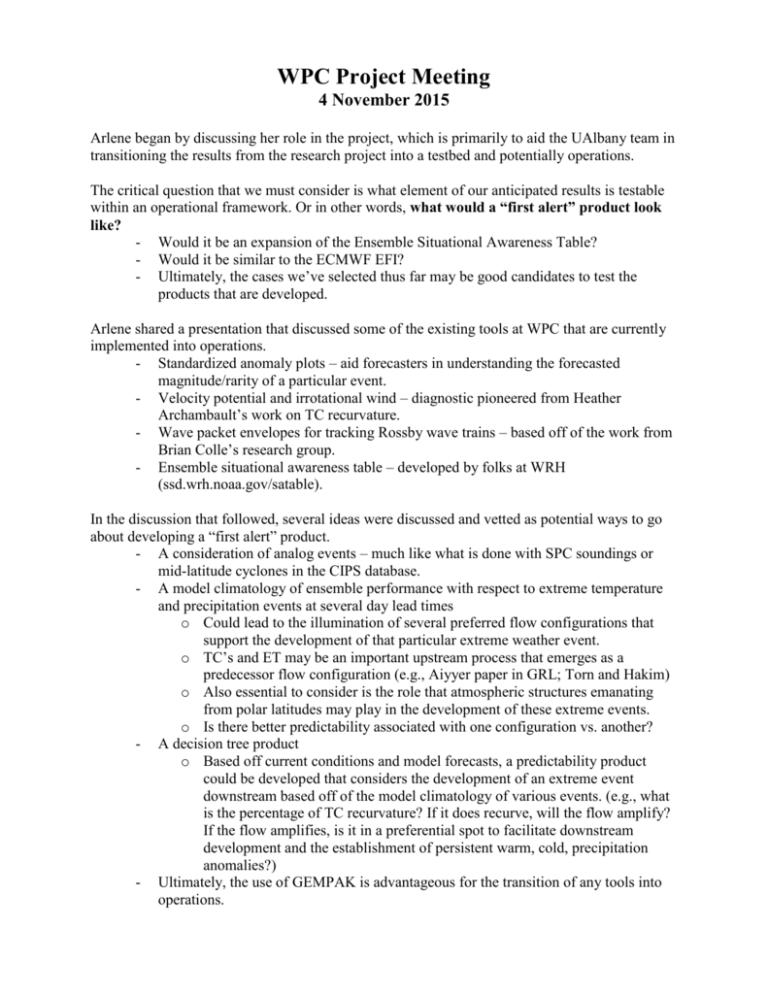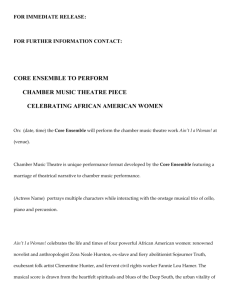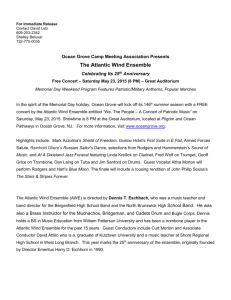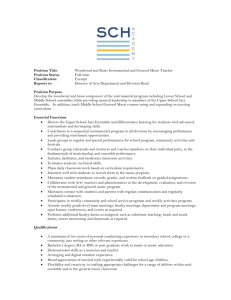WPCMeeting4Nov
advertisement

WPC Project Meeting 4 November 2015 Arlene began by discussing her role in the project, which is primarily to aid the UAlbany team in transitioning the results from the research project into a testbed and potentially operations. The critical question that we must consider is what element of our anticipated results is testable within an operational framework. Or in other words, what would a “first alert” product look like? - Would it be an expansion of the Ensemble Situational Awareness Table? - Would it be similar to the ECMWF EFI? - Ultimately, the cases we’ve selected thus far may be good candidates to test the products that are developed. Arlene shared a presentation that discussed some of the existing tools at WPC that are currently implemented into operations. - Standardized anomaly plots – aid forecasters in understanding the forecasted magnitude/rarity of a particular event. - Velocity potential and irrotational wind – diagnostic pioneered from Heather Archambault’s work on TC recurvature. - Wave packet envelopes for tracking Rossby wave trains – based off of the work from Brian Colle’s research group. - Ensemble situational awareness table – developed by folks at WRH (ssd.wrh.noaa.gov/satable). In the discussion that followed, several ideas were discussed and vetted as potential ways to go about developing a “first alert” product. - A consideration of analog events – much like what is done with SPC soundings or mid-latitude cyclones in the CIPS database. - A model climatology of ensemble performance with respect to extreme temperature and precipitation events at several day lead times o Could lead to the illumination of several preferred flow configurations that support the development of that particular extreme weather event. o TC’s and ET may be an important upstream process that emerges as a predecessor flow configuration (e.g., Aiyyer paper in GRL; Torn and Hakim) o Also essential to consider is the role that atmospheric structures emanating from polar latitudes may play in the development of these extreme events. o Is there better predictability associated with one configuration vs. another? - A decision tree product o Based off current conditions and model forecasts, a predictability product could be developed that considers the development of an extreme event downstream based off of the model climatology of various events. (e.g., what is the percentage of TC recurvature? If it does recurve, will the flow amplify? If the flow amplifies, is it in a preferential spot to facilitate downstream development and the establishment of persistent warm, cold, precipitation anomalies?) - Ultimately, the use of GEMPAK is advantageous for the transition of any tools into operations.











